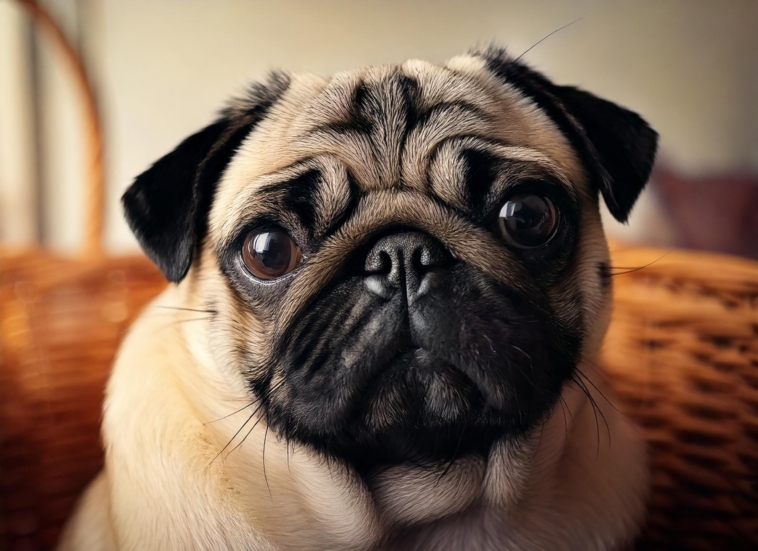Introduction: Adopting a Pug—A Journey of Love, Snorts & Surprises
Considering bringing home a pug? Congratulations! You’re soon to bring home a small, wrinkled roommate who snores like the cantankerous old man and needs the adoration of a celebrity. Being a pug parent is half joy, half chaos, and “what did I just step in?” But those wide eyes and smooshed faces make it all worthwhile.
Prior to abandoning all reason to go sweater-matching, here’s what you can expect:
- Walkies (lots of ’em) Your pug might resemble a couch potato, but walks are essential—for your sanity and their waistline.
- Spa days (at home). Clean ears (yep, it’s a thing), trimmed nails, and gentle de-gunking of those famous face folds.
- Budgeting 101. Between vet bills, gourmet kibble, and leashes they’ll likely chew up, pugs are an expensive proposition. But who needs savings when you have snuggles?
Pug Personality: Equal Parts Charm & Velcro
They believe pugs are sweet—and they are! But they’re also magnets for attention who would tunnel into your skin if it meant being near you. Buckle up for a fluffy shadow with a cute snort.
- Affectionate to a rosy: Pugs need to love it all. You. The cat. The delivery guy. The wall.
- Goofy Playthings: They look like they’re designed to sleep, but give them a squeaky toy and let the chaos begin, aww.
- Loyal to a Fault: Like, stare-at-you-while-you-shower loyal.
- Calm Vibes: They’re usually cool, unless the mailman arrives. Then it’s hostilities.
Tip: Mix playtime and training! It’s multitasking, pug-style. Just don’t try to get them to listen to you while wearing a banana suit.

Health Stuff (a.k.a. Ow, My Face)
Pugs are sweet little loaves of love, but their smooshed faces have some fine print:
- Snort Alert: That adorable breathing? It’s called Brachycephalic Syndrome. Translation: They snore like chainsaws and might require special attention.
- Eye Drama: Pugs’ eyes are like reality TV—big, dramatic, and perpetually in trouble. Keep an eye out for dryness or injury.
- Allergy Season is Every Season: Food, grass, air—something’s always out to make them itch.
- Heat? No Thanks: These small creatures overheat quicker than your phone when it has 1% battery.
How to Keep Your Pug in Prime Snuggle Shape:
- Vet visits: Periodic check-ups to keep your pug moving (or waddling) along smoothly.
- Daily exercise: Walk, not run. (Believe me, they’ll quit halfway and have to be carried like kings and queens.)
- Grooming: Wash those wrinkles like your pug’s social calendar depends on it. Because it kinda does.
Tearjerkers Incoming: Pug Rescue Glow-Ups
There is nothing that pulls at the heartstrings more than a rescue pug finding their permanent home. Cue the tears of joy and showtunes:
- Bella’s Makeover: A quiet little wallflower no more, she is now a fearless cuddle monster due to her foster family.
- Luna’s Second Chance: Rescued from a puppy mill and now enjoying her best post-trauma life with belly rubs and puppuccinos.
Taking home a rescue pug doesn’t only rescue an animal—it releases a depth of loyalty and affection that strikes you in the feels.
Conclusion: Adopt, Don’t Shop (And Prepare for Snorts)
So, you’re thinking about bringing a pug into your life? Amazing! Just make sure you’re ready for:
- A face that snores louder than your uncle.
- A personality that needs constant validation.
- A commitment that’s as real as that pug’s appetite.
Things to Think About First:
- Time: Pugs want to hang out. Always. Like, always.
- Money: Food, vet visits, and an inevitable pug-sized wardrobe.
- Lifestyle: They’re not exactly adventure dogs. They prefer adventures with snacks and shade.
The Final Snort: Why Adopt a Pug?
Adopting from a shelter means you’re giving a second chance to a snuggly, slightly dramatic doggo who just wants love (and maybe bacon). Plus, it promotes responsible ownership and ensures your new best friend isn’t coming from shady breeders.
So, if you’re ready for a life full of laughter, loyalty, and the occasional snore symphony—adopt a pug. Your heart (and lap) will thank you.




